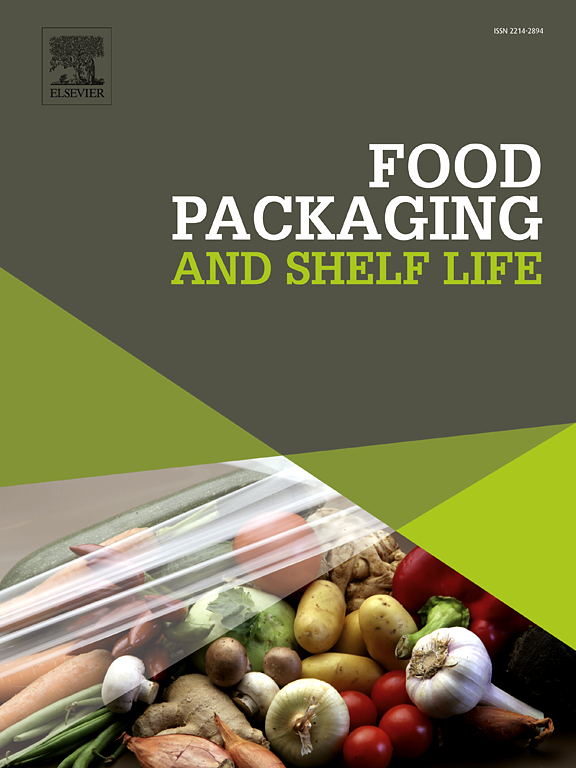Functional edible coating based on carbon dots and gelatin/cellulose nanofibers for fresh egg preservation
IF 8.5
1区 农林科学
Q1 FOOD SCIENCE & TECHNOLOGY
引用次数: 0
Abstract
A nanocomposite formulation based on cellulose nanofibers (CNF)/gelatin(G) blend was developed and added with various concentrations of nitrogen-functionalized carbon dots (NCD) to use as antibacterial coatings for shell eggs. The physicochemical and functional properties of the films were analyzed, and it was found that NCD enhanced the flexibility of the nanocomposite films by forming strong hydrogen bonds due to the surface functional groups. Although the addition of NCD decreased the water vapor barrier properties, the UV-blocking ability of the films was significantly enhanced, achieving more than 90 % UV-blocking effect with minimal effect on film transparency. The nanocomposite films C/G/NCD (Cellulose Nanofibers/Gelatin/NCD) were loaded with different percentages of NCD such as 1,2,3 and 5 %. Among them C/G/NCD5 % exhibited strong antibacterial and antioxidant activities, eradicating 100 % of Staphylococcus aureus and Salmonella enterica within 12 h and exhibited excellent free radical scavenging properties. When coated on raw eggs, the C/G/NCD5 % formulation effectively prevented Salmonella contamination and inhibited further bacterial growth during storage. Our results suggest that the NCD-enhanced CNF/gelatin nanocomposite coating has significant potential as an antimicrobial agent, providing a promising solution for extending the shelf life of eggs and reducing the risk of Salmonella contamination during storage.
求助全文
约1分钟内获得全文
求助全文
来源期刊

Food Packaging and Shelf Life
Agricultural and Biological Sciences-Food Science
CiteScore
14.00
自引率
8.80%
发文量
214
审稿时长
70 days
期刊介绍:
Food packaging is crucial for preserving food integrity throughout the distribution chain. It safeguards against contamination by physical, chemical, and biological agents, ensuring the safety and quality of processed foods. The evolution of novel food packaging, including modified atmosphere and active packaging, has extended shelf life, enhancing convenience for consumers. Shelf life, the duration a perishable item remains suitable for sale, use, or consumption, is intricately linked with food packaging, emphasizing its role in maintaining product quality and safety.
 求助内容:
求助内容: 应助结果提醒方式:
应助结果提醒方式:


